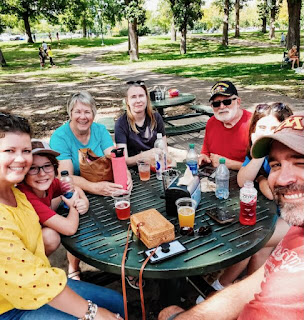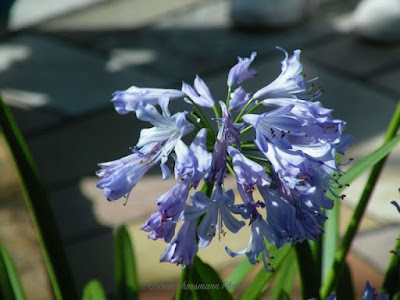This last August post is about some of the interesting historical sites we happened upon while geocaching to and from our E Family gathering in Minnesota earlier this month.
We are retired educators enjoying the next phase in our lives. Traveling, geocaching and time with family and friends are how we spend our retirement days. We are enjoying the adventures of life after our working years.
Tuesday, August 29, 2023
One More Minnesota Post
Friday, August 25, 2023
Minnehaha Falls
The final stop for the E family was at Minnehaha Falls. This was a new location for most of us. The falls along the Mississippi River were vital to the tradesmen, soldiers, and farmers who settled in the area. A history of the Minnehaha Falls can be found here: Minnehaha Falls
We saw only a fraction of the park, mainly the falls.
Thursday, August 24, 2023
Como Park Zoo
The Conservatory was the main reason the E family went to Como Park, but I for one, am glad we added a walk through the Como Park Zoo. I asked McBe how it compared to his recent trip to the Omaha Zoo. His reply, "All the same animals, but on a much shorter walk!" Probably not ALL the same animals they may have seen in Omaha, but definitely a shorter walk!
The first zoo in Saint Paul was started when in 1897, the city of St. Paul received a gift of three deer. Additional animals followed, when more room was needed to house the animals they were moved to facilities at Como Park. Como Zoo continued to grow through donations of animals and money.
The Art Deco Zoological Building was designed in 1936 by Charles Bassford as part of the federally funded Works Progress Administration. Other WPA structures were completed in the 1930s, including Monkey Island, barn and bear grotto.
In the 1980s several new exhibits were added as part of a major renovation project, including the Large Cat exhibit (1980), Aquatic Animal Building and conversion of Monkey Island to Seal Island (1982), the Primate Facility (1985), the Land and Water Bird exhibit (1986) and the African Hoofed Stock Facility (1987). A new Polar bear exhibit was finished in 2010. A new seal and sea lion exhibit with two pools was completed in 2021. The zoo opened a new exhibit in 2013 called Gorilla Forest. ~ Wikipedia
Wednesday, August 23, 2023
The Conservatory of Como Park
The E family also visited Como Park during our stay in Minneapolis. We spent time in the Marjorie McNeely Conservatory, exploring the many different areas and gardens.
Tuesday, August 22, 2023
In Search of Bob Dylan
From the Minneapolis Sculpture Garden we walked on the pedestrian bridge, the Irene Hixon Whitney Bridge (1987), designed by Siah Armajani, crossing Hennepin Avenue, connecting the sculpture garden to Loring Park.
Archbishop Ireland invited Masqueray to Minnesota to collaborate on his grand plan to simultaneously build both the grand new cathedral in St. Paul and the Pro-Cathedral in Minneapolis. ~ Basilica of Saint Mary





























































